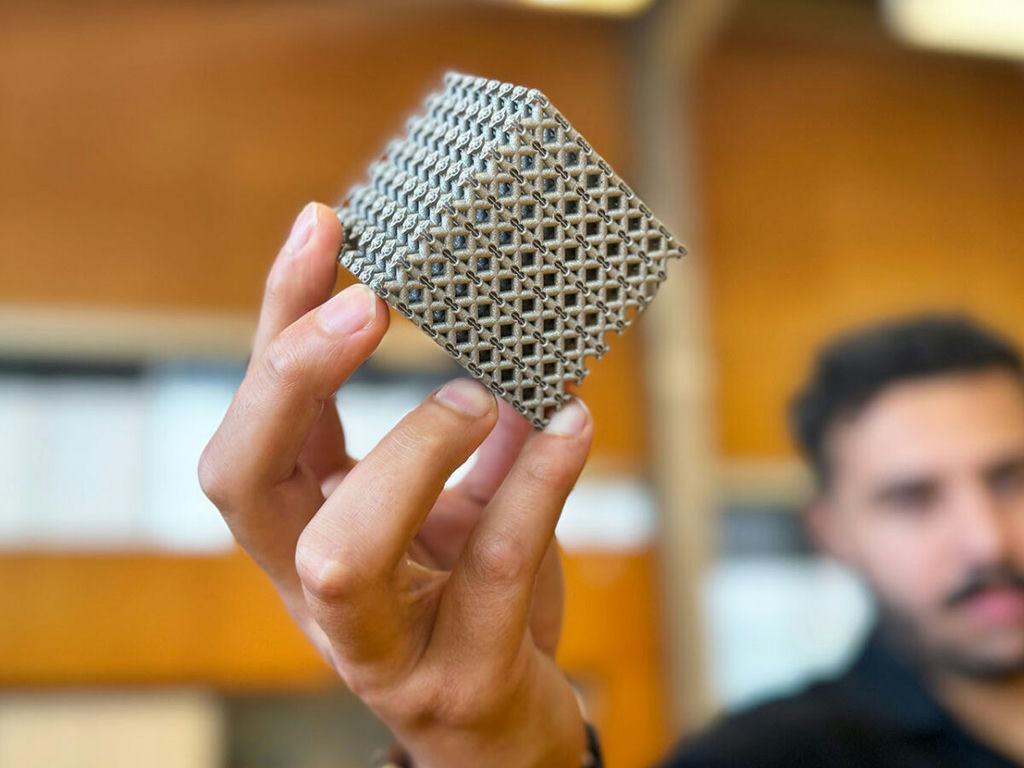A 3D printed ‘metamaterial’ boasting levels of strength for weight that have not been manufacturable could change how we make everything from medical implants to aircraft or rocket parts.
RMIT University researchers created the new metamaterial – a term used to describe an artificial material with unique properties not observed in nature – from common titanium alloy.
They wrote about the material’s unique lattice structure design that makes it 50 percent stronger than the next strongest alloy of similar density used in aerospace applications in the journal Advanced Materials.
Lattice structures made of hollow struts were originally inspired by nature: strong hollow-stemmed plants like the Victoria water lily demonstrate the combination lightness and strength, according to a statement.
RMIT’s Distinguished Professor Ma Qian said decades of trying to replicate these hollow ‘cellular structures’ in metals has been frustrated by issues of manufacturability and load stress concentrating on the inside areas of the hollow struts, leading to premature failures.
Professor Qian said: “Ideally, the stress in all complex cellular materials should be evenly spread.
“However, for most topologies, it is common for less than half of the material to mainly bear the compressive load, while the larger volume of material is structurally insignificant.”
The RMIT team optimised a new type of lattice structure to distribute the stress more evenly, enhancing its strength or structural efficiency.
“We designed a hollow tubular lattice structure that has a thin band running inside it. These two elements together show strength and lightness never before seen together in nature,.
“By effectively merging two complementary lattice structures to evenly distribute stress, we avoid the weak points where stress normally concentrates.”
Subscribe to AM Chronicle Newsletter to stay connected: https://bit.ly/3fBZ1mP
Follow us on LinkedIn: https://bit.ly/3IjhrFq
Visit for more interesting content on additive manufacturing: https://amchronicle.com


